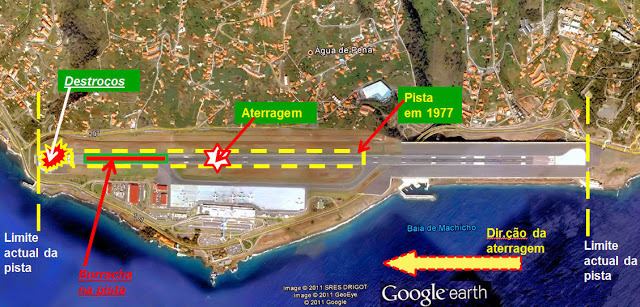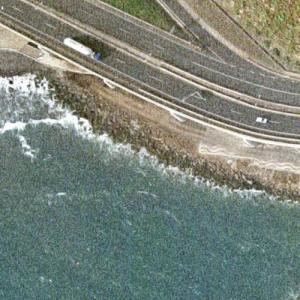Summary Runway overrun Passengers 156 Fatalities 131 Date 19 November 1977 Operator TAP Portugal | Site Funchal, Portugal Crew 8 Survivors 33 Number of deaths 131 Survivor 33 | |
 | ||
Last stopover Lisbon Portela Airport, Portugal Destinations Cristiano Ronaldo International Airport, Funchal, Portugal Similar Japan Airlines Flight 715, 1977 Benghazi Libyan Ar, Aeroflot Flight 331, SA de Transport Aérien Fli, Aeroflot Flight 3843 | ||
TAP Flight 425 was a regular flight from Brussels, Belgium, to Madeira Airport (informally known as Funchal Airport), Portugal, with an intermediate scheduled stop in Lisbon. On November 19, 1977, the Boeing 727 operating the service overran Madeira Airport's runway before crashing onto the nearby beach and exploding, killing 131 of the 164 people on board. It remains TAP's only fatal accident in its history.
Contents

Aircraft

The aircraft operating flight TP-425 was a Boeing 727-282 Advanced registration CS-TBR named after the Portuguese aviation pioneer Sacadura Cabral. Its manufacturer serial number was 20972/1096 and was delivered to TAP on 21 January 1975. It was powered by 3 Pratt & Whitney JT8D-17 turbofan engines which had a maximum thrust of 16,000 lbf each. The aircraft had completed a B check on 21 September 1977, and at the time of the accident had accumulated 6,154 flying hours in 5,204 cycles.
Accident

Shortly before 9:48pm on that Saturday evening, after 13 hours and 15 minutes of service time, the tired crew of the 727 was trying to land the airplane on the difficult Madeira airport runway, which at the time was 1,600 m (5,250 ft) long. After two unsuccessful attempts to land the aircraft, the Captain João Lontrão and Co-pilot Miguel Guimarães Leal decided to make one last try to land the plane, before they would have to make the decision to divert to the Gran Canaria Airport in the Canary Islands.

While on final approach to runway 24 in heavy rain, strong winds and poor visibility, the aircraft touched down 2,000 feet (610 m) past the threshold, and started hydroplaning. With just about 3,000 feet (910 m) of runway left, the crew tried desperately to stop, applying maximum reverse thrust and brakes, but the aircraft slid off the runway with a ground speed of approximately 43 knots (80 km/h) and plunged over a 200-foot (61 m) steep bank hitting a nearby bridge and crashing on the beach; splitting in two pieces and bursting into flames.
Of the 164 people aboard (156 passengers and eight crew), 131 were killed (125 passengers and 6 crew), making it the deadliest airplane accident in Portugal to that point. As of 2013, it is the second deadliest airplane accident in Portugal, after Independent Air Flight 1851. It remains TAP Portugal's only fatal accident since the beginning of its flight operations in 1946.
Aftermath
After the accident occurred, TAP stopped flying the Boeing 727-200 to Madeira, and started flying only the 727-100, which was six metres shorter and took 60 fewer passengers.
The crash prompted officials to explore ways of extending the short runway. Because of the height of the runway relative to the beach below, an extension was very difficult and too expensive to perform. Between 1983 and 1986, a 200-meter extension was built; 14 years later, the runway was again extended. Following the 2000 extension, the runway measures 2,781 m (9,124 ft) long and is capable of handling wide-body commercial jets like the Boeing 747 or the Airbus A340.
